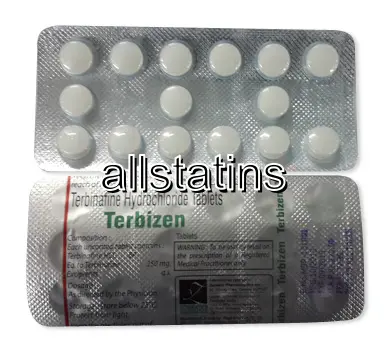Buy Terbinafine Online in Australia
| Package | Dosage | Price | Price per Dose | |
|---|---|---|---|---|
| Dosage: 250mg | ||||
| 120 pill | 250mg | AUD1,493.53 | AUD12.45 | |
| 90 pill | 250mg | AUD1,175.58 | AUD13.07 | |
| 60 pill | 250mg | AUD822.90 | AUD13.73 | |
| 30 pill | 250mg | AUD440.83 | AUD14.70 | |
| 10 pill | 250mg | AUD168.30 | AUD16.81 | |

Terbinafine Description
Introduction to Terbinafine
Terbinafine is a potent antifungal medication commonly used to treat various fungal infections of the skin and nails. It belongs to the class of allylamines, which work by targeting the fungal cell membrane, leading to the death of the fungi. This medication is widely prescribed by healthcare professionals due to its effectiveness and relatively favorable safety profile.
How Terbinafine Works
The active ingredient Terbinafine inhibits an enzyme called squalene epoxidase. This enzyme plays a vital role in the synthesis of ergosterol, a key component of the fungal cell membrane. Without ergosterol, the cell membrane becomes unstable, resulting in increased permeability and ultimately, fungal cell death. This targeted action makes Terbinafine highly effective in eliminating fungi while minimizing harm to human cells.
Common Uses of Terbinafine
Terbinafine is particularly effective against dermatophyte infections, including athlete’s foot, ringworm, and jock itch. It is also used to treat fungal onychomycosis, which is a fungal infection of the toenails or fingernails. The medication is available in various forms, including oral tablets and topical creams or solutions. The choice of formulation depends on the location and severity of the infection.
Advantages of Using Terbinafine
Many users find Terbinafine to be an effective treatment option. When taken as prescribed, it often results in faster clearance of infections compared to other antifungal agents. The oral form typically requires a treatment duration of a few weeks for skin infections and up to three months for nail infections. The topical versions are usually suitable for superficial infections and have minimal systemic absorption, reducing the risk of side effects.
Possible Side Effects and Precautions
Although generally safe, Terbinafine can cause side effects in some individuals. Common issues include gastrointestinal discomfort, headache, rash, and alterations in taste. Liver function abnormalities have been reported, so it is important to monitor liver health during prolonged therapy. Patients with pre-existing liver conditions or those taking other hepatotoxic medications should consult their healthcare provider before starting treatment.
Patient Considerations
It is essential for users to follow the prescribed dosage and complete the entire course of treatment. Discontinuing the medication early may result in a relapse of the infection or the development of resistant fungal strains. Regular check-ups are recommended, especially for long-term therapy, to ensure safety and effectiveness. Informing your doctor about any other medications or health conditions can help prevent potential drug interactions or adverse reactions.
Conclusion
Terbinafine remains a popular and effective antifungal medication for treating common skin and nail infections. Its targeted mechanism of action ensures fungi are eliminated efficiently, with a good safety profile for most users. Proper adherence to treatment guidelines and medical advice can maximize its benefits and minimize potential risks, making it a reliable choice for those suffering from fungal infections.
